
Катушка зажигания: что это, зачем нужна, признаки неисправности
Содержание
- Что такое катушка зажигания автомобиля
- Устройство и принцип работы катушки зажигания
- Функции катушки зажигания
- Работа катушки в общей схеме системы зажигания
- Основные характеристики катушки зажигания:
- Виды катушек зажигания
- Срок службы и неисправности катушек зажигания
- Как определить, что катушка неисправна?
- Можно ли починить катушку зажигания?
- Вопросы и ответы:
Как всем автомобилистам известно, бензиновый и дизельный силовой агрегат работают по отличающимся друг от друга принципам. Если в дизеле зажигание топлива возникает от температуры сжатого в цилиндре воздуха (на такте сжатия в камере находится исключительно воздух, а в конце такта подается солярка), то в бензиновом аналоге этот процесс активируется искрой, которую образует свеча зажигания.
Подробно об устройстве ДВС мы уже говорили в отдельном обзоре. Сейчас сосредоточимся на отдельном элементе системы зажигания, от исправности которого зависит стабильность работы мотора. Это катушка зажигания.
Откуда берется искра? Зачем в системе зажигания присутствует катушка? Какие виды катушек бывают? Как они работают и какое у них устройство?
Что такое катушка зажигания автомобиля
Чтобы бензин в цилиндре воспламенился, важна совокупность таких факторов:
- Достаточное количество свежего воздуха (за это отвечает дроссельная заслонка);
- Хорошее смешивание воздуха и бензина (это зависит от типа топливной системы);
- Качественная искра (она образуется свечей зажигания, но генерирует импульс именно катушка зажигания) или разряд в пределах 20 тысяч вольт;
- Разряд должен произойти, когда ВТС в цилиндре уже сжата, а поршень по инерции вышел из верхней мертвой точки (в зависимости от режима работы мотора этот импульс может генерироваться немного раньше этого момента или немного позже).
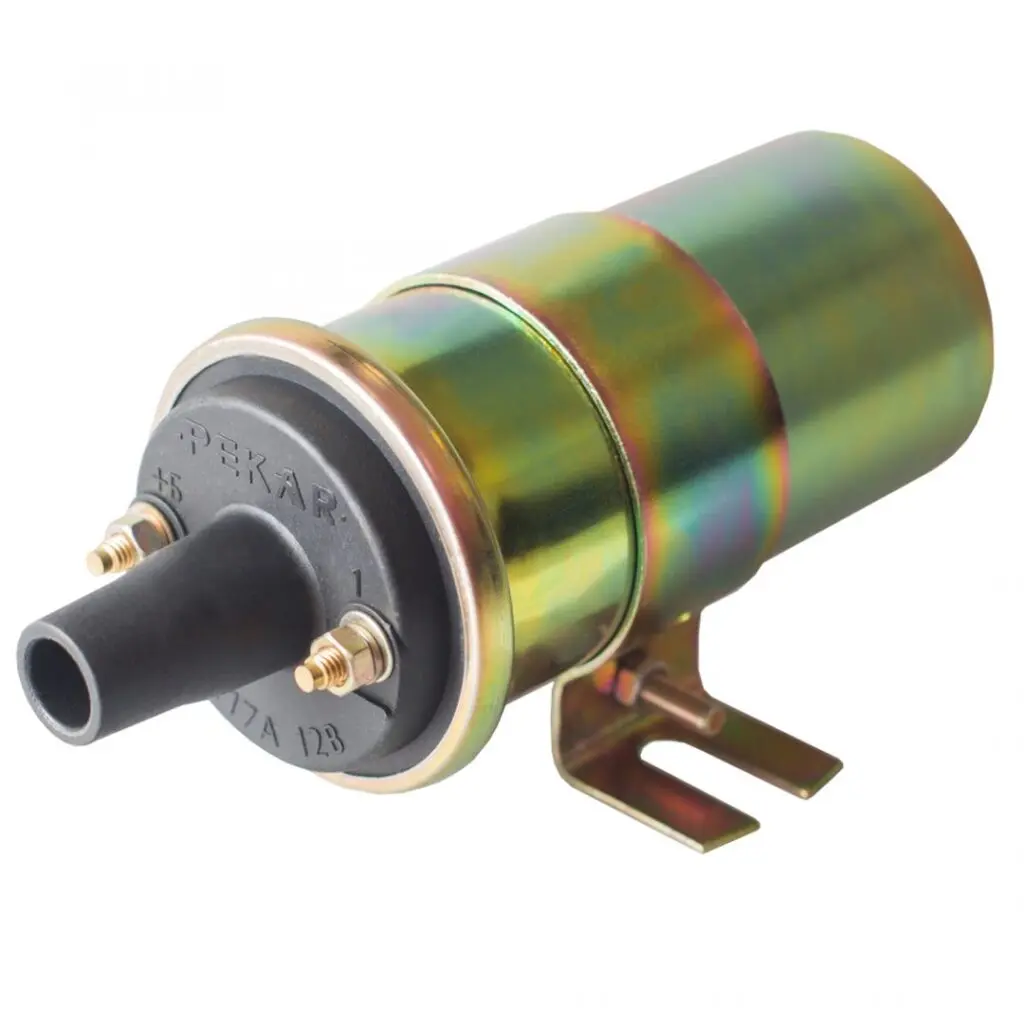
В то время как большинство перечисленных факторов зависят от работы впрыска, фаз газораспределения и других систем, высоковольтный импульс создает именно катушка. Вот откуда в 12-вольтовой системе берется такое огромное напряжение.
В системе зажигания бензинового авто катушка это небольшое устройство, которое является частью электрической системы машины. В нем имеется небольшой трансформатор, который накапливает энергию и при необходимости высвобождает весь запас. К моменту срабатывания высоковольтной обмотки он уже составляет около 20 тысяч вольт.
Сама система зажигания работает по следующему принципу. Когда в конкретном цилиндре завершается такт сжатия, датчик коленвала посылает небольшой сигнал на ЭБУ о необходимости в искре. Когда катушка находится в спокойном состоянии, она работает в режиме накапливания энергии.
Получив сигнал об образовании искры, блок управления активирует реле катушки, которое размыкает одну обмотку и замыкает высоковольтную. В этот момент высвобождается необходимая энергия. Импульс проходит через распределитель, который определяет, на какую свечу нужно подать напряжение. Ток поступает через высоковольтные провода, соединенные со свечами зажигания.
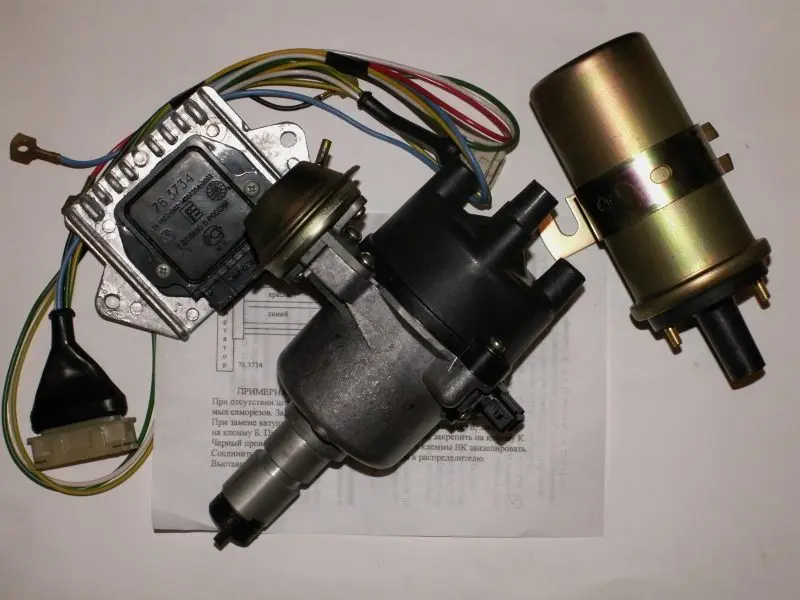
В старых автомобилях система зажигания в своем оснащении имеет трамблер, который распределяет напряжение по свечам и активирует/деактивирует обмотки катушки. В современных машинах такая система имеет электронный тип управления.
Как видно, катушка зажигания нужна для того, чтобы создать краткосрочный высоковольтный импульс. Энергия накапливается за счет электросистемы автомобиля (АКБ или генератор).
Устройство и принцип работы катушки зажигания
На фото представлена одна из разновидностей катушек.
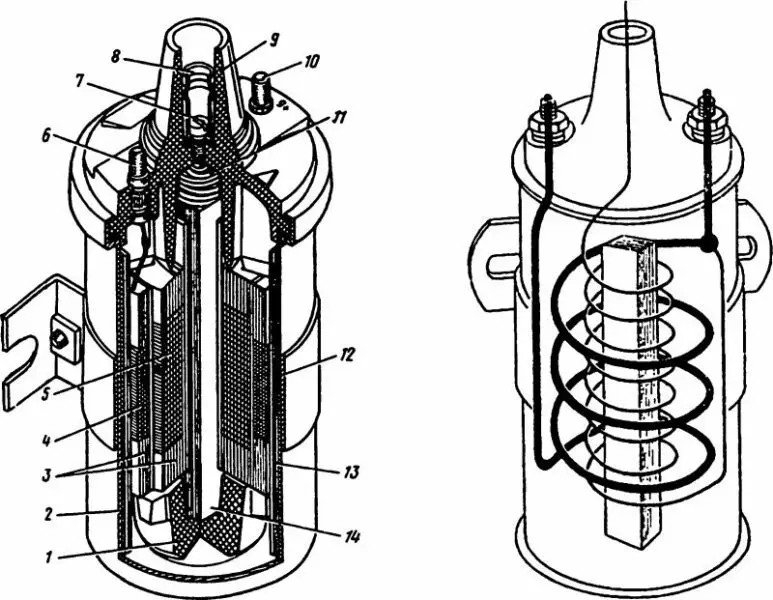
В зависимости от типа КЗ может состоять из:
- Изолятора, предотвращающего утечку тока из устройства;
- Корпуса, в котором собраны все элементы (чаще всего он металлический, но также встречаются и пластиковые аналоги, выполненные из термостойкого материала);
- Изоляционной бумаги;
- Первичной обмотки, которая выполнена из заизолированного кабеля, намотанного в 100-150 витков. На ней имеются выходы на 12В;
- Вторичной обмотки, которая имеет строение, схожее с основной, но насчитывает 15-30 тыс. витков, намотанные внутри первичной. Элементами с подобной конструкцией может оснащаться модуль зажигания, двухвыводная и сдвоенная катушка. В этой части КЗ создается напряжение, превышающее 20тыс.В в зависимости от модификации системы. Чтобы контакт каждого элемента устройства был максимально заизолирован, и не образовывался пробой, используется наконечник;
- Клеммного контакта первичной обмотки. На многих катушках он обозначается буквой К;
- Контактного болта, с помощью которого контактный элемент фиксируется;
- Центрального выхода, на который надевается центральный провод, идущий к распределителю;
- Защитной крышки;
- Клеммного элемента питания бортовой сети машины;
- Контактной пружины;
- Фиксирующей скобы, с помощью которой устройство закрепляется в неподвижном положении в подкапотном пространстве;
- Внешнего кабеля;
- Сердечника, который предотвращает образование вихревого тока.
В зависимости от типа автомобиля и системы зажигания, которая в нем используется, расположение КЗ несет индивидуальный характер. Чтобы быстро найти этот элемент, нужно ознакомиться с технической документацией для автомобиля, в котором будет указываться электрическая схема всего авто.
Работа КЗ имеет принцип функционирования трансформатора. Первичная обмотка по умолчанию подключена к АКБ (а когда двигатель работает, используется энергия, которую вырабатывает генератор). Пока она находится в состоянии покоя, ток проходит по кабелю. В этот момент обмотка образует магнитное поле, воздействующее на тонкий провод вторичной обмотки. В результате этого воздействия в высоковольтном элементе накапливается высокое напряжение.
Когда срабатывает прерыватель и отключается первичная обмотка, в обоих элементах образуется электродвижущая сила. Чем выше ЭДС самоиндукции, тем быстрее пропадет магнитное поле. Для ускорения этого процесса на сердечник КЗ также может подаваться ток малого вольтажа. На вторичном элементе увеличивается сила тока, из-за чего напряжение на этом участке резко падает и образуется напряжение дуги.
Этот параметр сохраняется, пока энергия полностью не исчезнет. У большинства современных автомобилей этот процесс (снижение напряжения) длится на протяжении 1.4мс. Для образования мощной искры, способной пробить воздух между электродами свечи, этого вполне достаточно. После полного разряда вторичной обмотки остаток энергии задействуется для поддержания напряжения и затухающих колебаний электричества.
Функции катушки зажигания
Эффективность катушки зажигания во многом зависит от типа распределителя, который используется в системе автомобиля. Так, механический распределитель в процессе замыкания/размыкания контактов теряет небольшое количество энергии, так как между элементами может образовываться небольшая искра. Недостаток механических контактных элементов прерывателя проявляется на высоких или низких оборотах мотора.
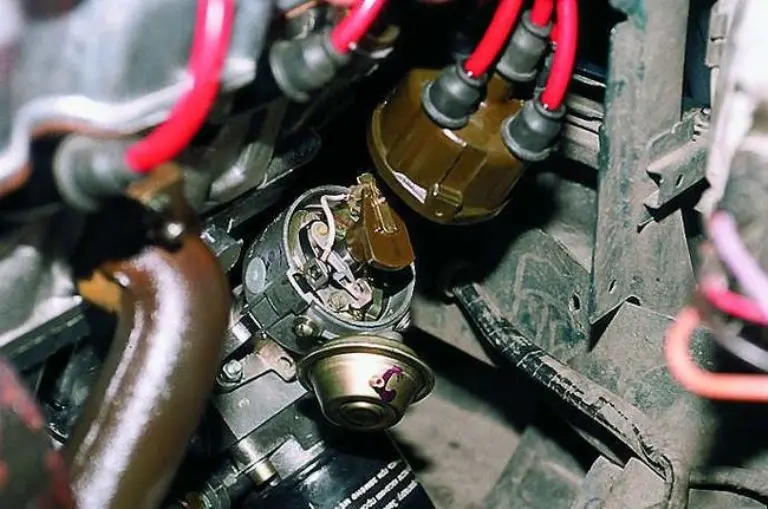
Когда коленчатый вал имеет небольшое количество оборотов, контактные элементы распределителя образуют небольшой дуговой разряд, в результате чего на свечу поступает меньше энергии. Но при высоких оборотах коленвала контакты прерывателя вибрируют, из-за чего вторичное напряжение падает. Чтобы устранить этот эффект, на катушках, работающих с механическим прерывателем, устанавливается резисторный элемент.
Как видно, назначение катушки одно – преобразовывать ток малого напряжения на высокое. Остальные параметры работы СЗ зависят от других элементов.
Работа катушки в общей схеме системы зажигания
Подробно об устройстве и разновидностях систем зажигания автомобиля рассказывается в отдельном обзоре. Но если коротко, то в схеме СЗ катушка будет работать по следующему принципу.
Низковольтные контакты подсоединяются к низковольтной проводке, идущей от аккумулятора. Чтобы батарея не разряжалась в процессе работы КЗ, низковольтный участок схемы нужно сдвоить с генератором, поэтому проводка собирается в один жгут на плюс и один жгут на минус (попутно во время работы ДВС батарея подзаряжается).
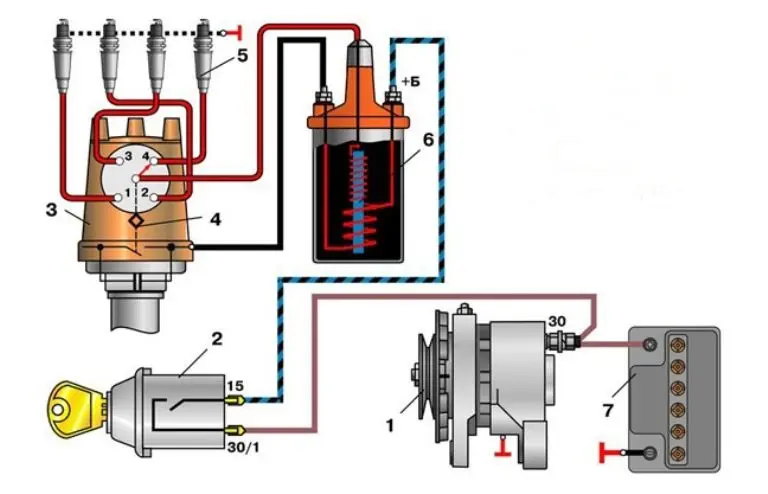
Если генератор перестает работать (о том, как проверить его неисправность, рассказывается здесь), автомобиль задействует энергию аккумуляторного источника питания. На батарее производитель может указывать, сколько времени машина может проработать в таком режиме (подробно о том, по каким параметрам подбирать новый аккумулятор в свой автомобиль, рассказывается в другой статье).
Из катушки выходит один высоковольтный контакт. В зависимости от модификации системы его подключение может быть либо на прерыватель, либо непосредственно на свечу. Когда включается зажигание, с аккумулятора на катушку поступает напряжение. Между обмотками образуется магнитное поле, которое усиливается благодаря наличию сердечника.
В момент запуска мотора стартер проворачивает маховик, вместе с которым вращается и коленвал. ДПКВ фиксирует положение этого элемента и подает импульс на блок управления, когда поршень на такте сжатия доходит до верхней мертвой точки. В КЗ размыкается цепь, что провоцирует кратковременный всплеск энергии во вторичной цепи.
По центральному проводу образовавшийся ток поступает на распределитель. В зависимости от того, какой цилиндр срабатывает, такая свеча зажигания и получает соответствующее напряжение. Между электродами происходит разряд, и эта искра воспламеняет сжатую в полости смесь воздуха и топлива. Существуют системы зажигания, в которых каждая свеча оснащена индивидуальной катушкой или они сдвоены. Очередность срабатывания элементов определяется на низковольтной части системы, благодаря чему потери высокого напряжения минимизируются.
Основные характеристики катушки зажигания:
Вот таблица основных характеристик и их значения для КЗ:
| Параметр: | Значение: |
| Сопротивление | На первичной обмотке эта характеристика должна находиться в пределах 0.25-0.55Ом. Этот же параметр на вторичной цепи должен находиться в пределах 2-25кОм. Этот параметр зависит от мотора и типа системы зажигания (для каждой модели он отдельный). Чем будет выше сопротивление, тем меньше мощности на образование искры. |
| Искровая энергия | Эта величина должна составлять около 0.1Дж и расходоваться в течение 1.2мс. В свечах эта величина соответствует параметру дугового разряда между электродами. Эта энергия зависит от диаметра электродов, зазора между ними и их материала. Также она зависит от температуры ВТС и давления в камере цилиндра. |
| Напряжение пробоя | Пробой это разряд, который образуется между электродами свечи. Рабочее напряжение зависит от зазора СЗ и теми же параметрами, что и при определении энергии искры. Этот параметр должен быть выше, когда мотор только заводится. Сам мотор и воздушно-топливная смесь в нем еще плохо нагреты, поэтому искра должна быть мощной. |
| Количество искр/мин. | Количество искр в минуту определяется по оборотам коленчатого вала и числу цилиндров ДВС. |
| Трансформация | Это величина, которая показывает, насколько увеличивается первичное напряжение. При поступлении 12 вольт на обмотку и последующем ее отключении сила тока резко снижается до нулевого значения. В этот момент начинает расти напряжение в обмотке. Эта величина и есть параметр трансформации. Она определяется путем соотношения числа витков обеих обмоток. |
| Индуктивность | По этому параметру определяют накопительные свойства катушки (измеряется она в Гн.). Величина индуктивности пропорциональна количеству накапливаемой энергии. |
Виды катушек зажигания
Немного выше мы рассмотрели конструкцию и принцип работы самой простой модификации КЗ. В такой компоновке системы распределение образовавшихся импульсов обеспечивает трамблер. Современные автомобили оснащаются электронными регуляторами, и вместе с ними катушки другого типа.
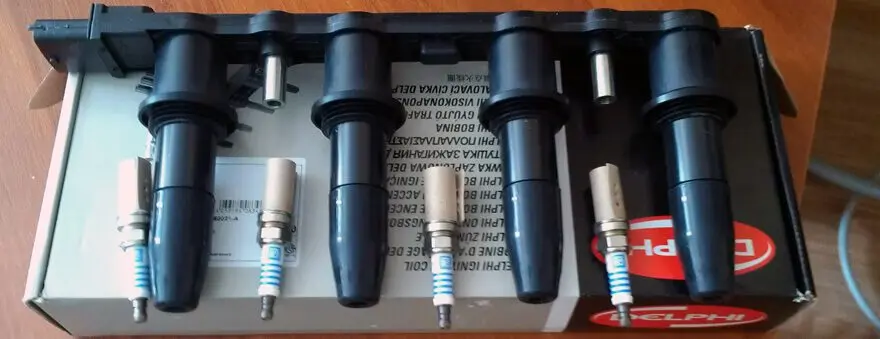
Современная КЗ должна соответствовать следующим критериям:
- Иметь небольшие размеры и вес;
- Должна иметь большой срок службы;
- Ее конструкция должна быть максимально простой, чтобы ее было легко устанавливать и обслуживать (когда появляется неисправность, автомобилист сможет самостоятельно ее выявить и предпринять необходимые действия);
- Быть защищенной от воздействия влаги и высокой температуры. Благодаря этому автомобиль будет продолжать эффективно работать при меняющихся погодных условиях;
- При установке непосредственно на свечи пары от мотора и другие агрессивные условия не должны портить корпус детали;
- Должна быть максимально защищенной от коротких замыканий и утечек тока;
- Ее конструкция должна обеспечивать эффективное охлаждение и одновременно удобство в монтаже.
Существуют такие разновидности катушек:
- Классические или общие;
- Индивидуальные;
- Сдвоенные или двухвыводные;
- Сухие;
- Маслозаполненные.
Независимо от типа КЗ действие у них одинаковое – они преобразуют низкое напряжение в ток высокого напряжения. Однако каждый вид имеет свои конструктивные особенности. Рассмотрим каждый из них подробней.
Классическая конструкция катушки зажигания
Такие КЗ использовались в старых автомобилях с контактным, а потом и бесконтактным зажиганием. Они имеют самую простую конструкцию – состоят из первичной и вторичной обмоток. На низковольтном элементе может насчитываться до 150 витков, а на высоковольтном – до 30 тыс. Чтобы между ними не образовывалось короткого замыкания, провода, которые используются для образования витков, изолированы.
В классическом исполнении корпус выполнен из металла в форме стакана, заглушенного с одной стороны и закрытого крышкой с другой. На крышку выведены низковольтные контакты и один контакт на магистраль высокого напряжения. Первичная обмотка расположена поверх вторичной.
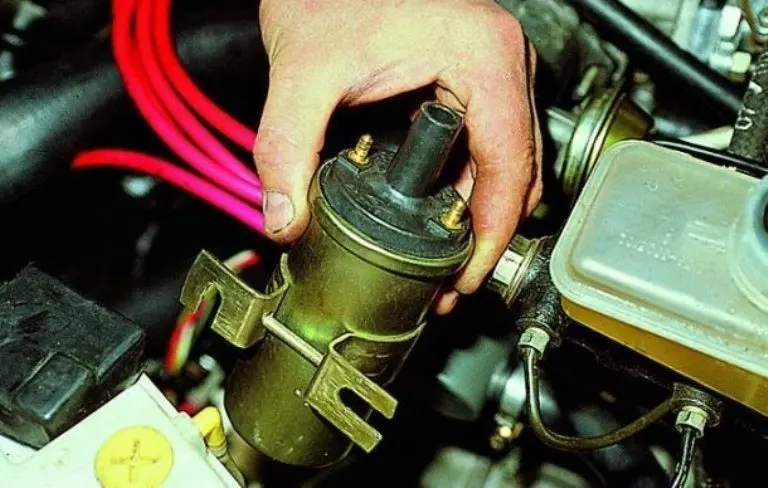
В центре высоковольтного элемента расположен сердечник, который обеспечивает увеличение силы магнитного поля.
Подобный автомобильный трансформатор сейчас практически не используется из-за особенностей современных систем зажигания. Их еще можно встретить на старых автомобилях отечественного производства.
Общая КЗ имеет следующие особенности:
- Максимальное напряжение, которое она способна сгенерировать, находится в пределах 18-20 тыс.В.;
- В центре высоковольтного элемента установлен пластинчатый сердечник. Каждый элемент в нем имеет толщину 0.35-0.55мм. и изолирован при помощи лака или окалины;
- Все пластины собраны в общую трубку, вокруг которой намотана вторичная обмотка;
- Для изготовления колбы устройства используется алюминий или листовая сталь. На внутренней стенке имеются магнитопроводы, которые выполнены из электротехнического стального материала;
- Напряжение в высоковольтной цепи устройства увеличивается со скоростью 200-250 В/мкс;
- Энергия разряда составляет около 15-20 мДж.
Конструктивные отличия индивидуальных катушек
Как становится ясно из названия элемента, такая КЗ устанавливается непосредственно на свечу и генерирует импульс только для нее. Эта модификация используется в электронном зажигании. От предыдущего типа она отличается только своим расположением, а также конструкцией. В ее устройство также входит две обмотки, только высоковольтная здесь намотана поверх низковольтной.
Помимо центрального сердечника у нее еще имеется и наружный аналог. На вторичной обмотке установлен диод, который отсекает ток высокого напряжения. На протяжении одного цикла мотора такая катушка генерирует одну искру для своей свечи. Из-за этого все КЗ необходимо синхронизировать с положением распределительного вала.
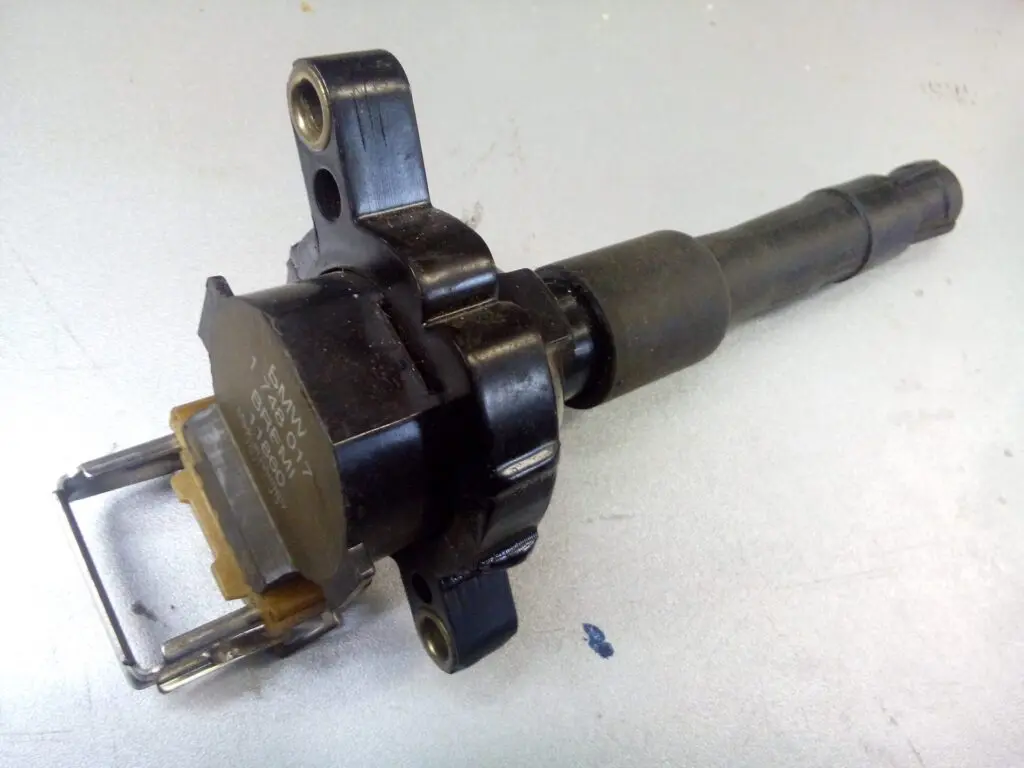
Достоинство данной модификации перед упомянутой выше заключается в том, что ток высокого напряжения проходит минимальное расстояние от вывода обмотки до стержня свечи. Благодаря этому энергия вообще не теряется.
Двухвыводные катушки зажигания
Такие КЗ также используются преимущественно в электронном типе зажигания. Они являют собой усовершенствованный вид общей катушки. В отличие от классического элемента у такой модификации два высоковольтных вывода. Одна катушка обслуживает две свечи – искра образуется на двух элементах.
Достоинство такой схемы заключается в том, что первая свеча срабатывает, чтобы воспламенить сжатую смесь воздуха и топлива, а вторая создает разряд, когда в цилиндре происходит такт выпуска. Дополнительная искра появляется вхолостую.
Еще один плюс таких моделей катушек в том, что подобная система зажигания не нуждается в распределителе. К свечам они могут подключаться двумя способами. В первом случае катушка стоит отдельно, а к надсвечникам идет по одному высоковольтному проводу. Во втором варианте катушка установлена на одну свечу, а вторая подключается через отдельный провод, выходящий из корпуса устройства.
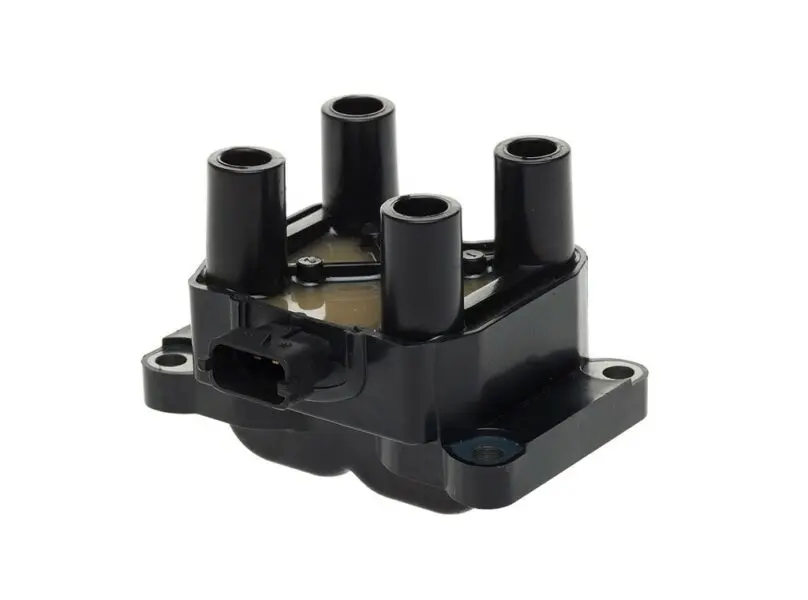
Данная модификация используется только на двигателях, у которых парное количество цилиндров. Они могут быть также собраны в один модуль, из которого выходит соответствующее количество высоковольтных проводов.
Сухие и маслозаполненные катушки
Классическая КЗ внутри заполняется маслом для трансформаторов. Эта жидкость предотвращает перегрев обмоток устройства. Корпус таких элементов металлический. Так как железо обладает хорошей теплоотдачей, но вместе с тем и само нагревается. Такое соотношение не всегда рационально, так как подобные модификации часто сильно нагреваются.
Чтобы устранить подобный эффект, современные устройства изготавливаются вообще без корпуса. Вместо него используется эпоксидный компаунд. Этот материал одновременно выполняет две функции: и охлаждает обмотки, и защищает их от воздействия влаги и других негативных воздействий окружающей среды.
Срок службы и неисправности катушек зажигания
В теории служба данного элемента системы зажигания современного автомобиля ограничена 80-ю тысячами километров пробега машины. Однако это не является константой. Причина тому – разные условия эксплуатации транспортного средства.
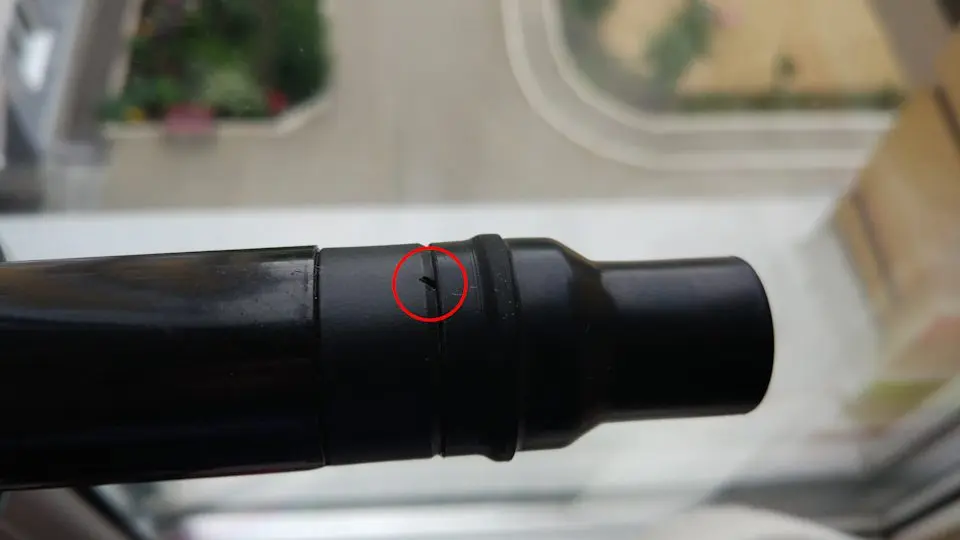
Вот лишь некоторые факторы, которые могут значительно сократить ресурс данного устройства:
- Короткое замыкание между обмотками;
- Катушка часто перегревается (такое бывает с общими модификациями, установленными в плохо проветриваемом отсеке подкапотного пространства), особенно если она уже не первой свежести;
- Длительная работа или сильные вибрации (часто этот фактор влияет на исправность моделей, которые установлены на двигателе);
- При плохом напряжении от аккумулятора время накопления энергии превышено;
- Повреждение корпуса;
- Когда водитель не выключает зажигание во время деактивации ДВС (первичная обмотка находится под постоянным напряжением);
- Повреждение изоляционного слоя ВВ проводов;
- Неправильная распиновка при замене, обслуживании устройства или подключении дополнительного оборудования, например, электрического тахометра;
- Некоторые автомобилисты, выполняя раскоксовку мотора или другие процедуры, отсоединяют катушки от свечей, но не отключают их от системы. После того, как были выполнены очистительные работы с двигателем, они стартером проворачивают коленвал, чтобы удалить всю грязь из цилиндров. Если не отключить катушки, они в большинстве случаев выходят из строя.
Чтобы не сократить срок службы катушек, водителю следует:
- Выключать зажигание при неработающем моторе;
- Следить за чистотой корпуса;
- Периодически перепроверять контакт высоковольтных проводов (не только контролировать окисление на надсвечниках, но и на центральном проводе);
- Следить за тем, чтобы ни на корпус, ни тем более внутрь не попадала влага;
- Во время обслуживания системы зажигания ни в коем случае не браться за высоковольтные элементы голыми руками (это опасно для здоровья), даже если мотор заглушен. Если в корпусе есть трещина, человек может получить серьезный разряд, поэтому ради безопасности лучше проводить работы в резиновых перчатках;
- Периодически проводить диагностику устройства на сервисной станции.
Как определить, что катушка неисправна?
Современные автомобили оснащаются бортовыми компьютерами (о том, как он работает, зачем нужен и какие бывают модификации нештатных моделей, рассказывается в другом обзоре). Даже самая простая модификация этого оборудования способна распознать неисправности электрической системы, в которую входит и система зажигания.
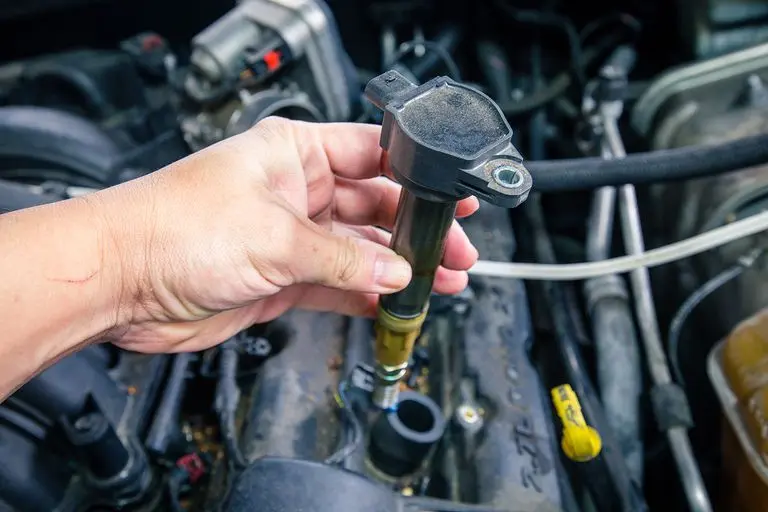
При поломке КЗ будет светить значок мотора. Конечно, это очень обширный сигнал (эта иконка на приборной панели загорается, например, и при выходе из строя лямбда-зонда), поэтому не стоит полагаться только на это оповещение. Вот какие еще признаки сопровождают поломку катушки:
- Периодическое или полное отключение одного из цилиндров (о том, почему еще мотор может троить, рассказывается здесь). Если некоторые современные бензиновые моторы с непосредственным впрыском оснащаются такой системой (она отсекает подачу топлива на некоторые форсунки при минимальной нагрузке агрегата), то обычные моторы демонстрируют нестабильную работу независимо от нагрузки;
- В холода и при повышенной влажности воздуха машина либо плохо заводится, либо вообще не заводится (можно насухо вытереть провода и попробовать завести авто – если помогло, то нужно заменить комплект ВВ кабеля);
- Резкое нажатие на акселератор приводит к отказу двигателя (прежде чем менять катушки, нужно быть уверенным, что топливная система исправна);
- На ВВ проводах видны следы пробоя;
- В темное время суток на устройстве заметно небольшое искрение;
- Двигатель резко потерял динамику (это также может свидетельствовать о поломках самого агрегата, например, о прогорании клапанов).
Проверить исправность отдельных элементов можно при помощи замера сопротивления обмоток. Для этого используется обычный прибор – тестер. У каждой детали есть свой диапазон допустимого сопротивления. Серьезные отклонения свидетельствуют о неисправности трансформатора, и его нужно заменить.
При определении неисправности катушек стоит учитывать, что многие симптомы идентичны поломкам свечей зажигания. По этой причине нужно удостовериться в том, что они исправны, а потом уже переходить к диагностике катушек. О том, как определить поломку свечи, рассказывается отдельно.
Можно ли починить катушку зажигания?
Ремонт обычных катушек зажигания вполне возможен, однако на это нужно потратить много времени. Так, мастер должен точно знать, что ремонтировать в устройстве. Если нужно перемотать обмотку, то эта процедура требует точных знаний того, каким должно быть сечение и материал проводов, как правильно намотать их и зафиксировать.
Несколько десятилетий назад даже существовали специализированные мастерские, в которых предоставляли подобные услуги. Однако сегодня это больше прихоть любителей повозиться со своим автомобилем, чем потребность. Новая катушка зажигания (в старом авто она одна) стоит не настолько дорого, чтобы экономить деньги на ее покупке.
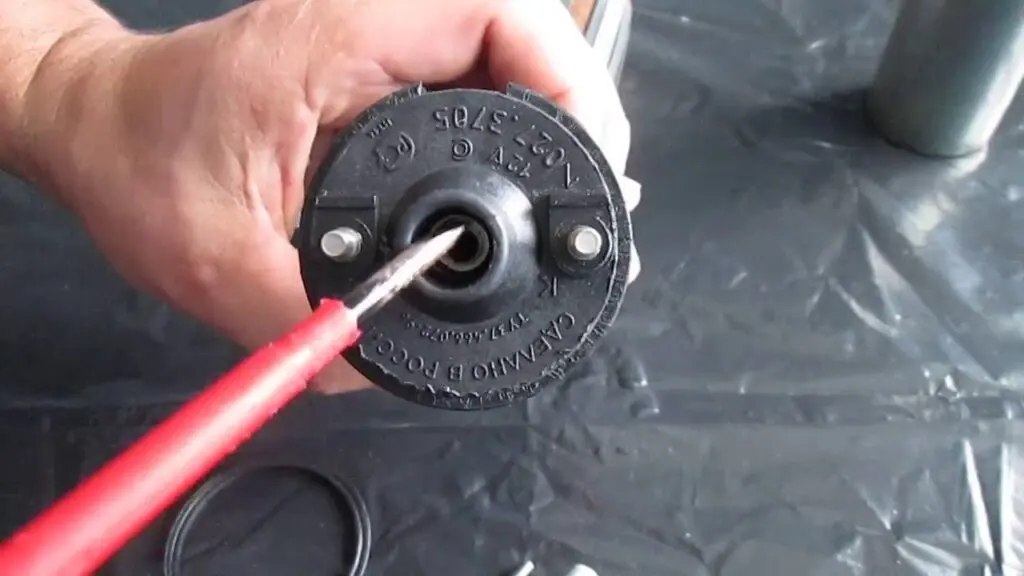
Что касается современных модификаций, то большинство из них нельзя разобрать, чтобы добраться до обмоток. Из-за этого их вообще невозможно отремонтировать. Но каким бы качественным ни был ремонт подобного устройства, заводскую сборку он не может заменить.
Самостоятельно установить новую катушку можно, если устройство системы зажигания позволяет для этого провести минимум демонтажных работ. В любом случае, если есть неуверенность в качественной замене, лучше доверить работу мастеру. Эта процедура не будет стоить дорого, зато будет уверенность в том, что она выполнена качественно.
Вот небольшое видео о том, как можно самостоятельно диагностировать неисправность отдельных катушек:
Вопросы и ответы:
Какие катушки зажигания бывают? Существуют общие катушки (одна на все свечи), индивидуальные (по одной на каждую свечу, вмонтированы в надсвечники) и сдвоенные (одна на две свечи).
Что находится внутри катушки зажигания? Это миниатюрный трансформатор, состоящий из двух обмоток. Внутри расположен сердечник из стали. Все это заключено в диэлектрический корпус.
Что такое катушки зажигания в автомобиле? Это элемент системы зажигания, который преобразует ток низкого напряжения в ток высокого напряжения (высоковольтный импульс при отключении низковольтной обмотки).
